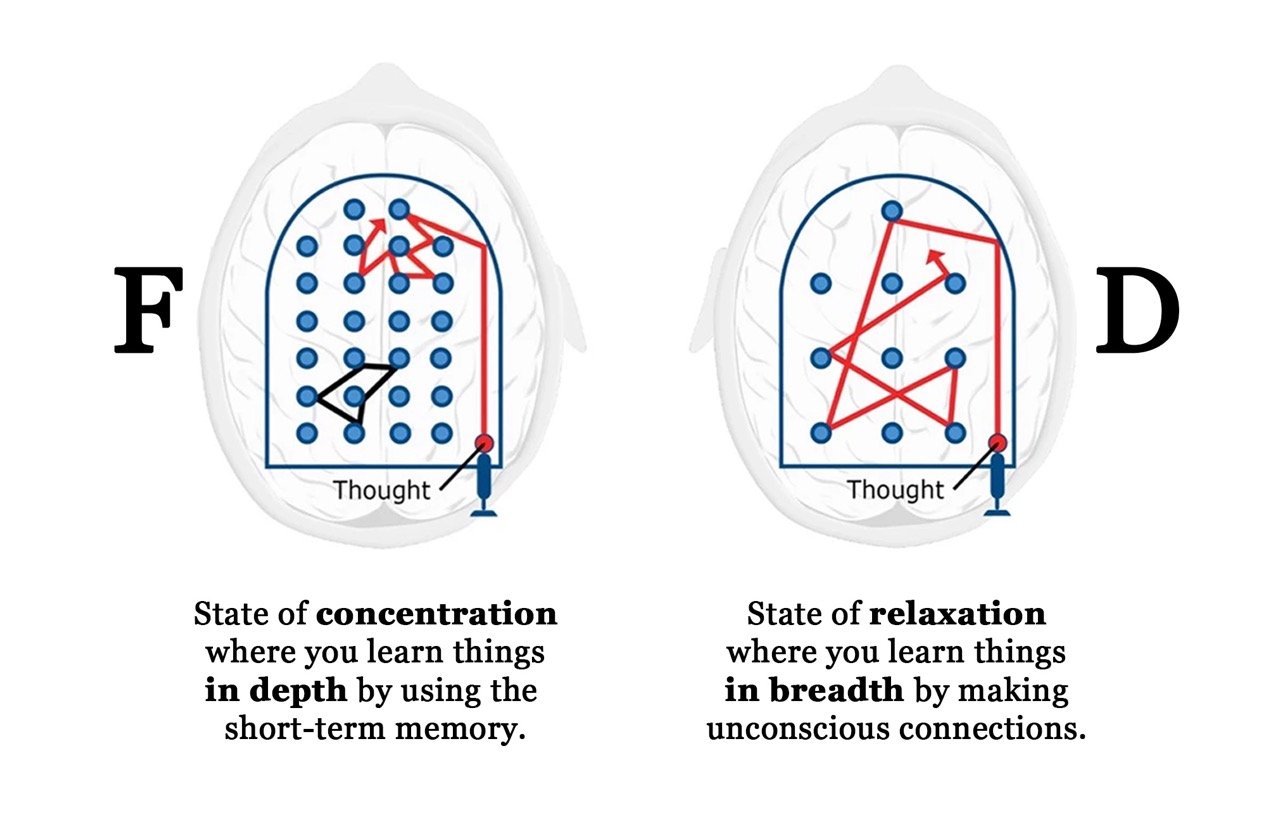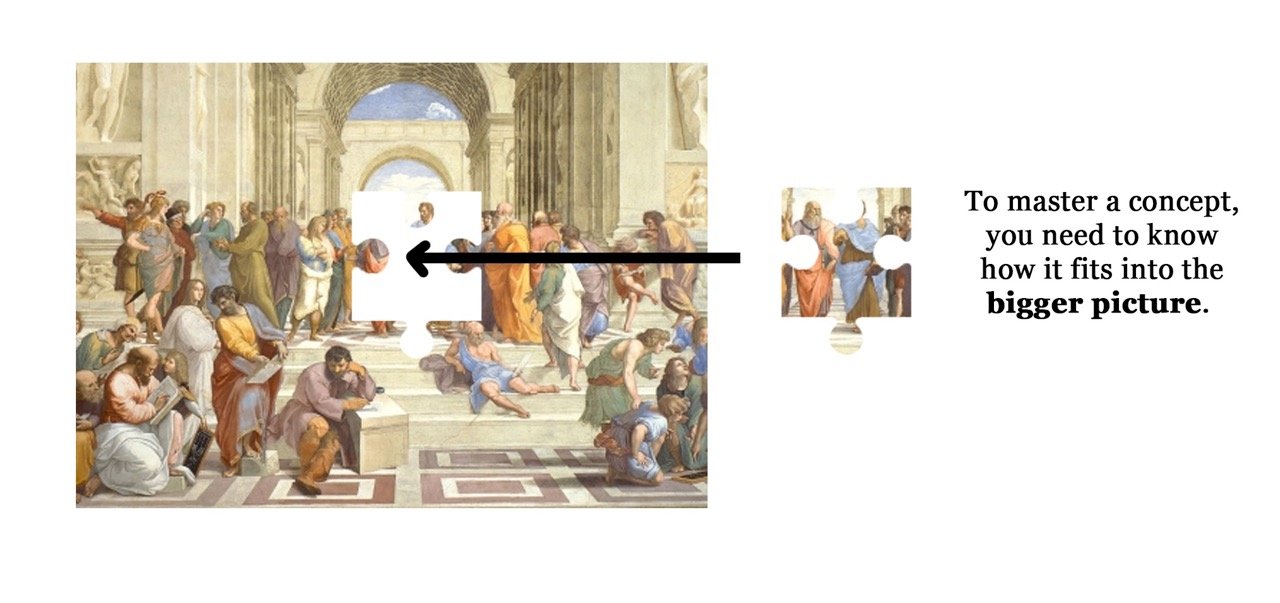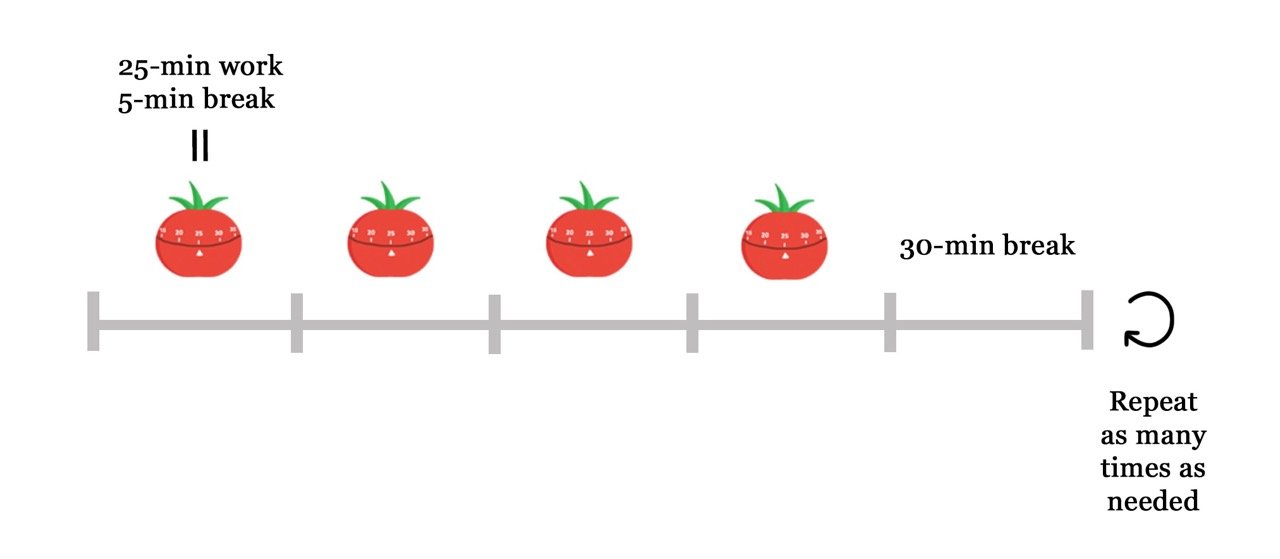Relearning how to learn
Nov 2, 2022
During my years in university I felt that many of the study techniques I was using were too time-consuming and perhaps not very effective. “There must be a better way” I thought.
When I stumbled across the Learning How to Learn course, my suspicions were confirmed. I had been doing many things wrong this whole time.
This course helped me relearn how to learn. It taught me effective learning techniques and the right mindset. These are my key takeaways.
Diffused vs focused thinking
The brain operates in focused mode when concentrating intently on something. This mode allows you to learn things in depth by using the short-term working memory.
The diffuse mode focuses on the breadth of thoughts. It’s a relaxed state where the brain makes unconscious connections that allows you to understand the bigger picture.
Both modes of thinking are crucial when learning. Push yourself to the edge of your current comprehension, and then diffuse. Exercise and sleep are great ways of entering diffuse mode.

Chunking
This is the idea of breaking down what you want to learn into small packages that your brain can access. Chunks are like parts of a puzzle, they are linked together through meaning. Chunks are created through focus, repetition and practice. To master a concept, you need to know it but also know how it fits into the bigger picture.
Hence, when studying, it helps to first skim through the material to understand the bigger picture, then look at an example or application and finally dig into the details.

Illusions of knowledge
Stephen Hawking once said that “The greatest enemy of knowledge is not ignorance; it is the illusion of knowledge”. Here are some classic illusions many of us fall victim to:
Rereading notes. Instead, practice active recall and spaced repetition.
Over-highlighting. Instead, only write key words / phrases and write brief notes to summarize key concepts.
Solving problems with the solution on the side. Instead, try solving problems on your own and only consult the solution if you're completely stuck.
Procrastination
You procrastinate to temporarily escape discomfort. Study in Pomodoro cycles without distractions to fight this: focus intensely for 25 min and take a 5 min break and give yourself a small reward. Repeat this 4 times then take a 30 min break. Repeat this entire cycle as many times as needed.
Focus on process instead of product. Replace “I have to finish X” by “I will spend 25 min on X”.
Planning your day should be done the night before because sleeping helps the brain prepare. Make sure to plan the finishing time of studying. Identify the critical tasks and schedule them with very short and clear deadlines.

Effective learning techniques
Use deliberate practice: focus on the things you find the hardest. Combine this with the Pareto principle which states that you should do the hardest tasks first.
Regularly jump between problems or subjects and think of overlaps (i.e. interleaving). This enhances creativity and creates new connections between chunks.
Spaced repetition is an effective learning method where you repeat what you have learned over increasingly longer intervals. But be careful of over-learning.
Make use of the powerful visual memory capabilities of the brain. The memory palace technique is useful. Also try to use metaphors and analogies to remember things better.
Test yourself: explain concepts out loud, actively recall and take mock exams. Learning what you don’t know is crucial. Learn from your mistakes.
It is what we know already that often prevents us from learning.
Boost your productivity
There are two key laws to be aware of. First is Parkinson’s Law which states that work expands so as to fill the time available for its completion. Second is the Pareto principle which states that for many events, around 80% of the effects come from 20% of the causes.
By combining the two, identify the few critical tasks that contribute the most to your goals and schedule them with very short and clear deadlines.
